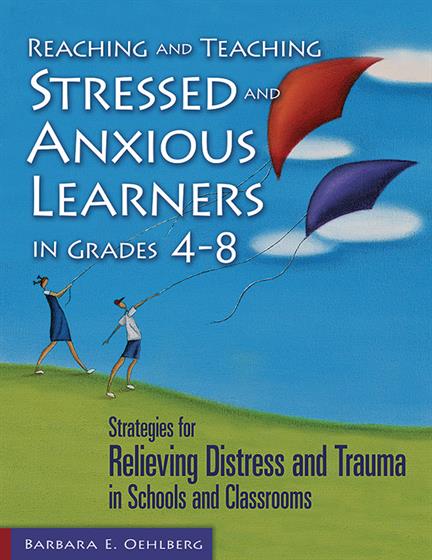Foreword by Susan G. Clark
Preface
Acknowledgments
About the Author
Introduction: Children Haven’t Changed; Childhood Has
Glossary: The Vocabulary of Anxiety, Stress, and Trauma
Part I: Brain Changes and How They Affect Student Behaviors and Learning
1. The Impact of Losses and Stress on the Student’s Mind and Body
Losses
Stress
When Traumatic Memories Are Triggered
Cognitive Lockout
Interventions Are Possible
2. Regaining Cognitive Access: The Process of Transforming Stress and the Sense of Helplessness
Transforming Perceptions of Helplessness
Strengthening Self-Regulation
Part II: Activities for Transforming the Helplessness Generated by Stress and Fear
3. Language Arts: Creative Writing and Journaling
Topics for Creative Writing and Journaling
Issues of Loss and Being Lost or Invisible
Issues of Rejection or Being Excluded
Issues of Brokenness, Helplessness, or Futurelessness
Issues of Betrayal or Broken Promises
Issues of Emotional Intelligence (Dealing with Feelings)
Issues of Hope, Empowerment, and Healing
Debating Points and Issues
Prose and Poetry
Integrating Art and Creative Writing into Core Curriculum Areas
Ad Campaigns
Comic Books
Mandalas
4. Social Studies and History: Creative Topics
Historical Cartoons and Storyboards
Fictional Comic Books About Historical Characters
Artistic Media Projects for History or Social Studies
Creating Scripts for Hypothetical Radio Interviews
Writing Radio Scripts for “What if …” Programs
Creating Public Service Announcements
5. Character Education
Internal Strengths: Emotional Intelligence
A Classroom Directory of Feelings and Emotions
A Feelings Mural: Addressing All Feelings
A Box of Respect: Addressing Self-Acceptance, Self-Respect, and the Ability to Respect and Empathize With Others
The Iceberg Project: Addressing Issues of Respect, Empathy, and Trust
Letters to Hurts: Addressing Empathy, Compassion, Courage, Anger Issues, Forgiveness, and Generosity
Drawing a Dream: Addressing Issues of Anger, Work Ethic, Forgiveness, and Hopelessness
Facing Fears: Addressing Fears, Courage, Anger, and the Ability to Overcome
Playground Charters: Addressing Issues of Leadership, Integrity, Conflict, Hopefulness, and Justice
Where Are the Heroes?
Issues of Emotional Honesty, Leadership, Risky Behaviors, and Choices
Honoring Strengths With a Character Wall
The Character Board Game
Physical Strengths
Internal Capacities for Self-Regulation and Stress Management
Leading a Relaxation Exercise
6. Building Resiliency Through Afterschool, Summer Camp, and Recreational Programming
Afterschool Programs
Specific Activities for Afterschool Programs
Logos
Collaborations for Creative Projects With Younger Children: Plays, Puppets, and Masks
Designing Board Games
Physical and Mental Exercises
Sand Trays
Clubs for a Sense of Belonging and Identity
Crossword Puzzles
Theater and Arts Groups or Camps
Drama Scripts for Stage or Radio: Building a World Fit for Children
Comedy Scripts
Movement and Dance
The Power of the Beat: The Rhythm of Healing
Media Production
Summer Camps or Activity Programs
Boys and Girls Clubs, Scouting, and 4-H
Section III: Schools That Work: A Sense of Safety for All
7. Sustaining Enhanced Learning Environments
Opportunities for Classroom Change
Avoiding the Stress of Threats
Alternative Responses
Classroom Guidelines
Restorative Discipline
"Discipline That Restores"
Stress Reduction Strategies for the Classroom
8. School Safety Issues: Violence Prevention
Generating a United Effort: Leadership and Staff Development
Specific Strategies for Overall Security and Sense of Safety Throughout the School Building
Strategies Specifically for Middle Schools
Supports for Reentering Students
Supports for New or Transferring Students
Suspension and Expulsion Policies
Crisis Preparation
Conflict and Anger Management
Violence Prevention Strategies
Early Prevention
Bullying
Inclusion
Restorative Justice
9. Meaningful Change in the U.S. Education System
Initiating Change from the Ground Up
Generating Support
Resource A: Crossword Puzzles
Resource B: Answers to the Crossword Puzzles
References
Index



